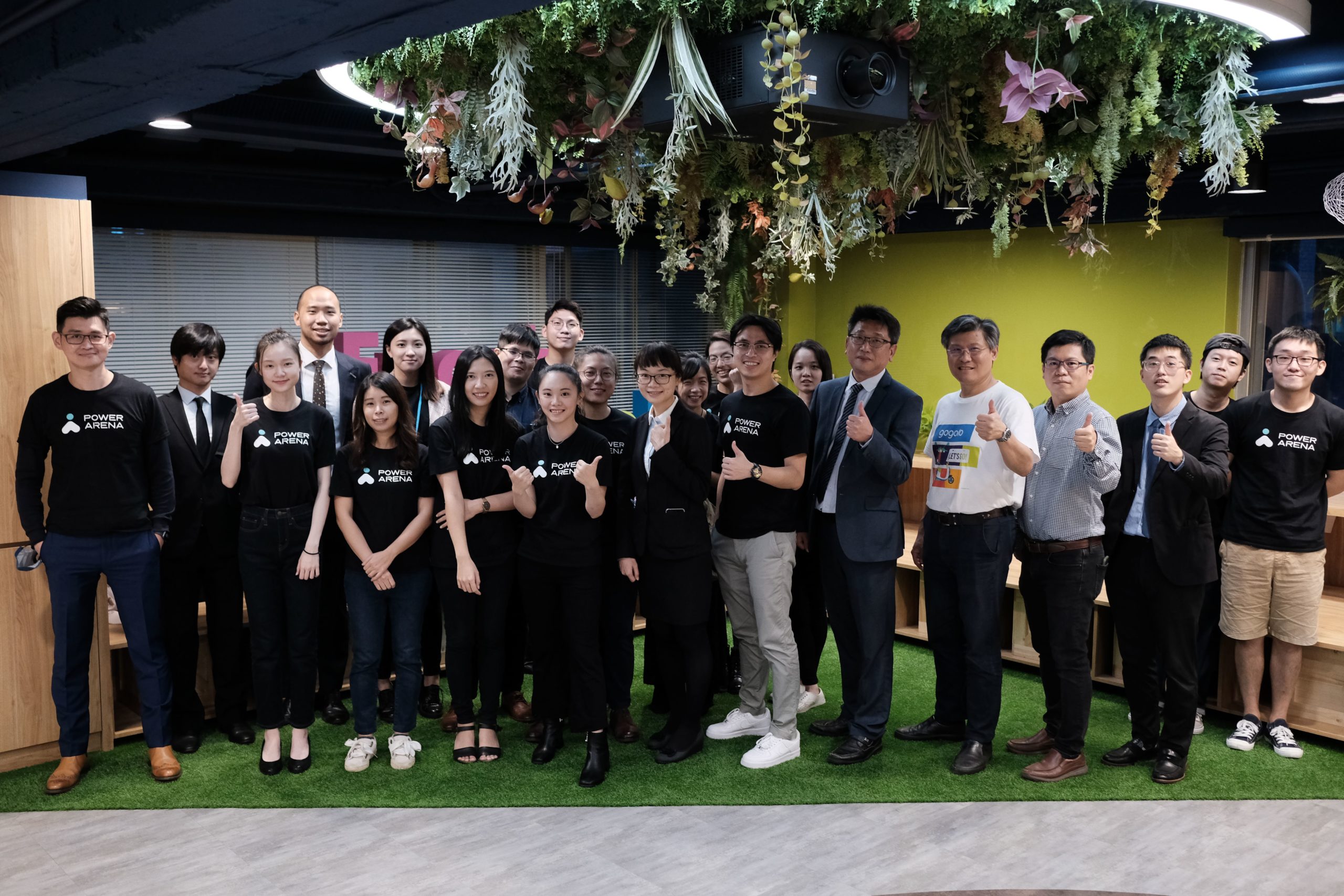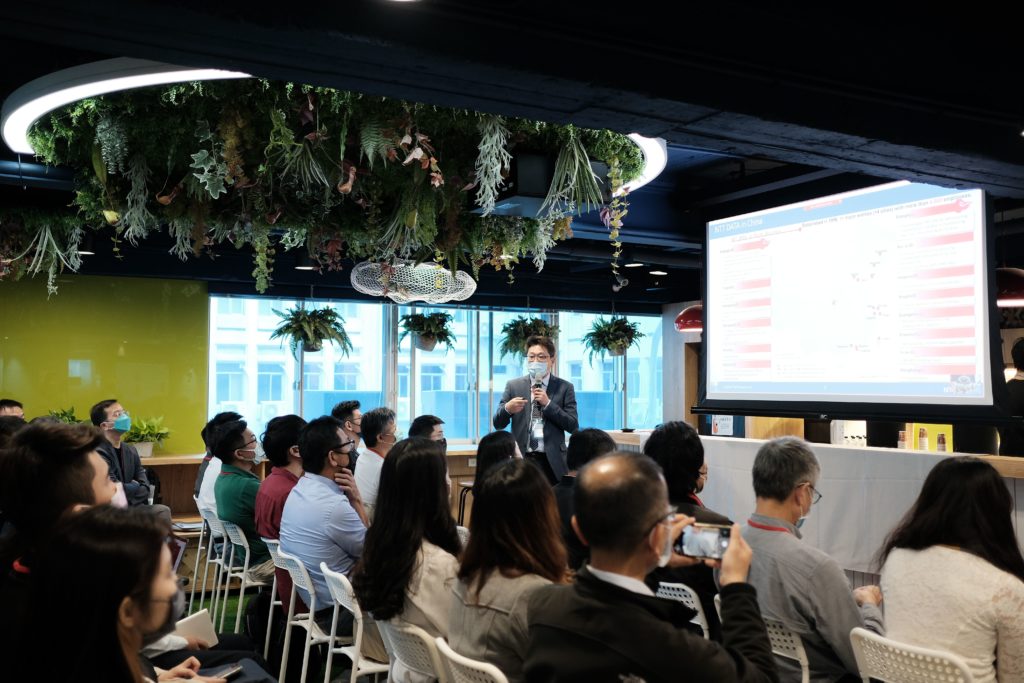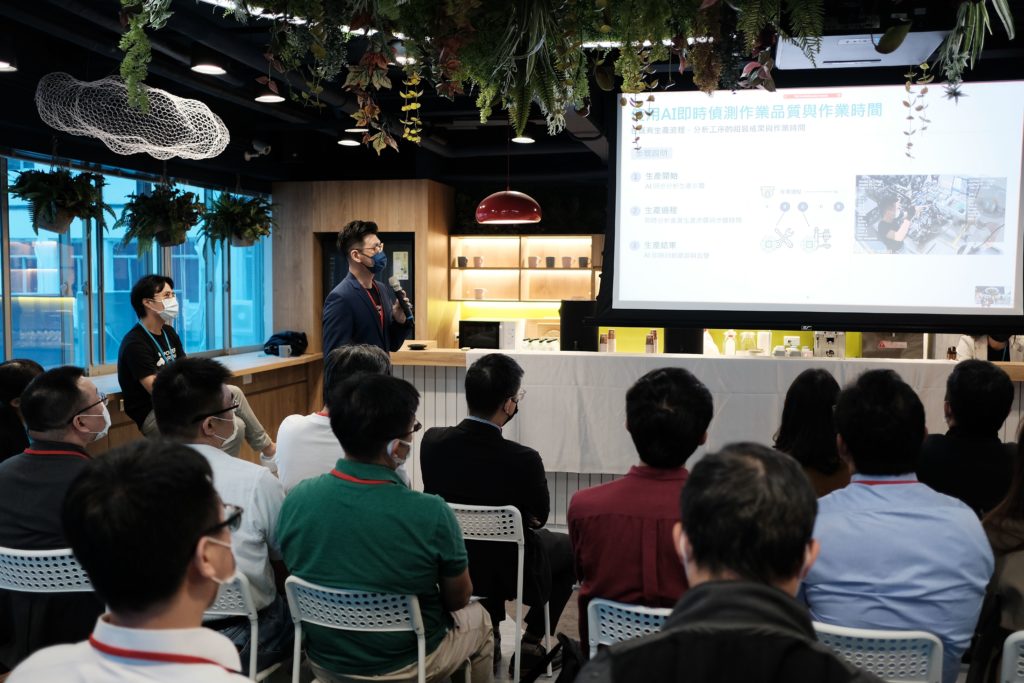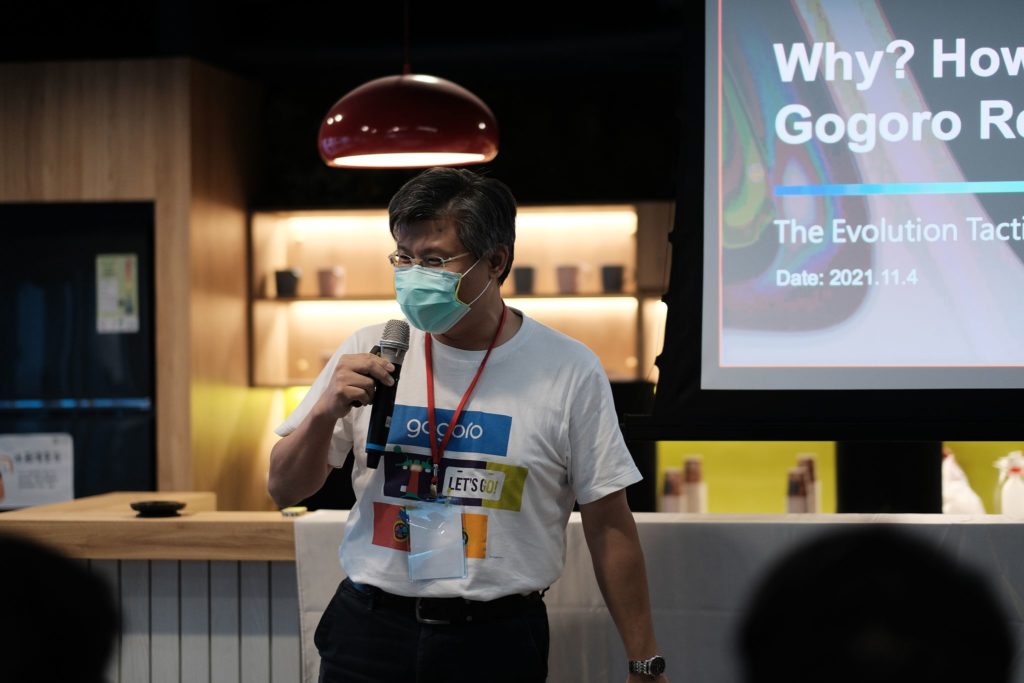PowerArena and NTT DATA Held Seminar, Gogoro Smart Manufacturing Expert as Keynote Speaker

On Nov. 4, 2021, over 50 industry leaders were invited to the seminar “AI and MES: Smart Automotive Factory” co-hosted by an artificial intelligence startup, PowerArena and a Japanese IT company, NTT DATA. Charlie Huang, Senior Manufacturing Manager of Gogoro, Taiwan’s electric scooter maker, was the keynote speaker of the event. The seminar was by invitation only and was held both virtually and offline.
NTT DATA – Leading the industry to digitalization with MES
In the post pandemic world, digital transformation has become a top priority for many enterprises. However, for most industries, conventional ones especially, the limited access to data has been a roadblock in realizing digital transformation. “The first step of digital transformation is digitalization,”, shared Alex Chao, Director of Technology of NTT DATA, “How do we achieve digitalization? We noticed that many industries in Taiwan are still at the stage of industry 2.0, many operations within the factories are still done manually, nor do they have advanced machines and equipment, and the data they acquired were of questionable accuracy. The factories must be equipped with Manufacturing Execution System (MES) and Equipment Automatic Program (EAP), the two are essential towards industry 3.0. After the tools [MES and EAP] begin to collect mass data and we have the data at our disposal, we can make use of the data, and we call this process ‘digital optimization’”

Data is essential when it comes to smart manufacturing and digital transformation. Through data visualization, once there is enough data, one would be able to make significant improvements and solve major issues within a factory in a short amount of time, in achieving so, deploying MES is relatively important. MES is like the brain of smart factory, it controls its body to make management decision. Either they be the machines or production yield rate, MES can ensure the verification of correction as well as the immediacy of production data. “In the industry, we see a lot of, what we call, OEE, which is Overall Equipment Efficiency,” indicated Roy Yang, MES Consultant of NTT DATA, “Many production works use OEE to evaluate KPI (Key Performance Indicators), but for some industries, transferring to automation lines is relatively difficult. Still, many production lines are operated by human, and for the data on this front, derived the so-called OPE (Overall Plant Efficiency)” OPE replaced the dimension of equipment in OEE with labor, providing enterprises with insights on the effectiveness and situation in labor-intensive production lines.
Utilizing computer vision and AI, PowerArena enables precision manufacturing for automobiles
There are a lot of variables in labor operations, industry leaders turn to PowerArena to collect data from their labor operations objectively. For many manufacturing sites, it means to deploy MES then gradually make further commitments in other manufacturing systems. However, for the automotive industry, as the unit price of production is high, they need to be able to acquire relevant data very shortly after the deployment of MES and EAP.

Ian Peng, Business Development Manager of PowerArena, took the opportunity to share with invitees on why the automotive industry needs computer vision solutions like that of PowerArena. According to Peng, every vehicle manufactured involved US$ 2,000 in labor cost, and each vehicle would take at least 25 hours on the assembly line. Through AI, PowerArena helps automotive factories manage and collect data from their labor-intensive production lines and enabling them to have complete knowledge of what’s happening on the production lines. Quality matters when it comes to automobile manufacturing, and many steps are crucial to quality and even safety. “Complicated duration, complex operations, sequences that can’t get messed up and steps that can’t be skipped,” explained Peng, “In operating procedures like this, information on each step as well as the time it takes, and whether it’s operated accordingly, can be gathered through a camera along with PowerArena software.” In the manufacturing process, AI analyzes the assembled products and cycle time of every workstation of every work order, to analyze and issue alerts in real-time, with the ability to traceback at any time. Production line management can utilize the analyzed data to make decisions, monitor and deal with manufacturing defeat, anytime.
Expert from Gogoro shares on Gogoro’s experience in transferring manufacturing process
Last but not least, Charlie Huang, Sr. Manufacturing Manager of Gogoro Inc., who has years of experience in smart automotive factories, shared his insights and experience with the audience.

Within the past five years, Gogoro has been devoted in smart manufacturing. Huang touched down on how Gogoro successfully transfer their know-how and manufacturing process to countries such as India and Indonesia with a language barrier, which is to use MES to regulate workers’ operating behaviors.
“In the process of transferring manufacturing process, there’s something that we cannot overlook, that is, ‘the who’, who is doing the tasks? Human.” Huang mentioned, not every process, every industry can enable automation, many tasks were operated by human eventually. Otherwise, businesses wouldn’t be moving their production to countries with relatively low cost of labor, such and India and Indonesia. How do we overcome the culture and language barrier to transfer the manufacturing process of manpower? It’s a key to smart manufacturing. To put it this way, when it comes to transferring process to other locations, the most difficult part of the 6Ms of production (Manpower, Method, Machine, Material, Milieu and Measurement), is manpower.
Huang also shared on how Gogoro utilized PowerArena and MES, “when a scooter is being assembled, PowerArena helped me confirm the work procedure and calculate cycle time,” revealed Huang, mentioning that collaborative works between workstations is very common in automotive manufactures. “We use PowerArena to tackle a loophole is MES, that is the collaborative works and interaction between parallel workstations.”
Demo room set up at the venue
To make industry leaders fully comprehend PowerArena and MES’ capability, a demo room was set up at the venue. Through simulating the production process, participants can experience the process themselves and develop further understanding on how the tools may help their factories.
 |  |  |
Through scanning barcodes, the MES will display the workstation it’s at as well as the prodecure and equipment requires. | Entering the workstation, one has to abide by the operating procedures | Once finished the procedures, one can learn through MES to see if any mistakes were made in the process. |
Through the seminar and live demonstration, PowerArena and NTT DATA wished that participants would have developed deeper understanding on the efforts required for enterprises to take towards digital transformation and smart manufacturing, and hopefully their own products can help the industry step towards industry 4.0.
